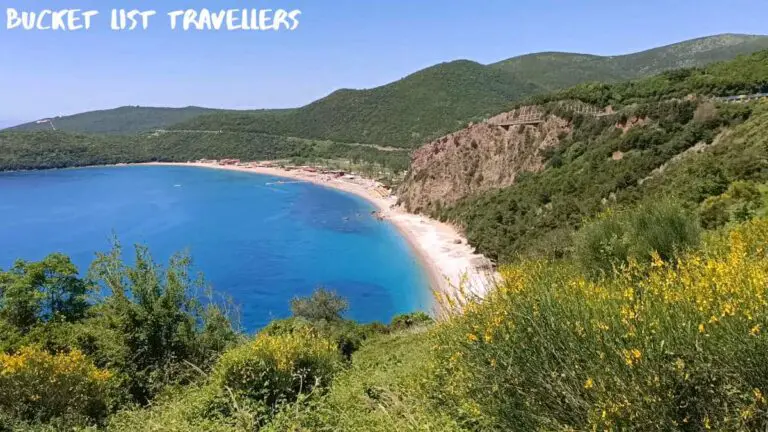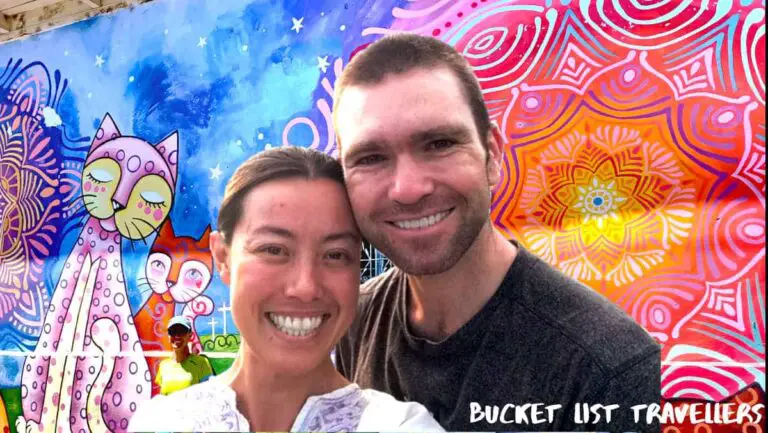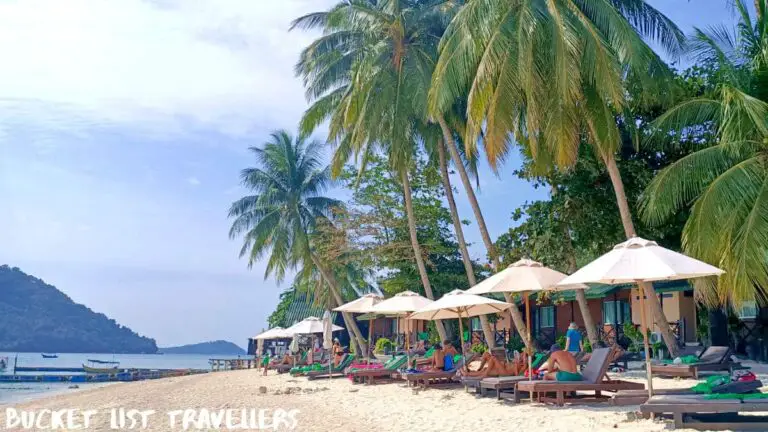Kuala Lipis, also known as Lipis and Little KL, is a charming Malaysian town with a rich history. In its heyday it was a gold mining town, and this can still be seen in its colonial era buildings. It was the capital of the state of Pahang from 1889 until 1955. Speak to the locals and you will get a sense of the pride they feel for their town, which now lives on much like an open-air living history museum. Notable buildings in the area include the Clifford School as well as the Thean Hou Buddhist temple. Kuala Lipis also has some fantastic food. Stand outs include the sweet and delicious cakoi from Master Cakoi Legasi Pak Ambong as well as the decadent drinks from Bumblebee. Find out more in this Kuala Lipis destination guide.
What is Kuala Lipis Malaysia famous for?
Once the capital of the state of Pahang, Kuala Lipis is known for its rich colonial past. With historic buildings such as the Clifford School and Thean Hou Buddhist temple, Kuala Lipis is like an open-air living history museum.
Why you should visit Kuala Lipis Malaysia
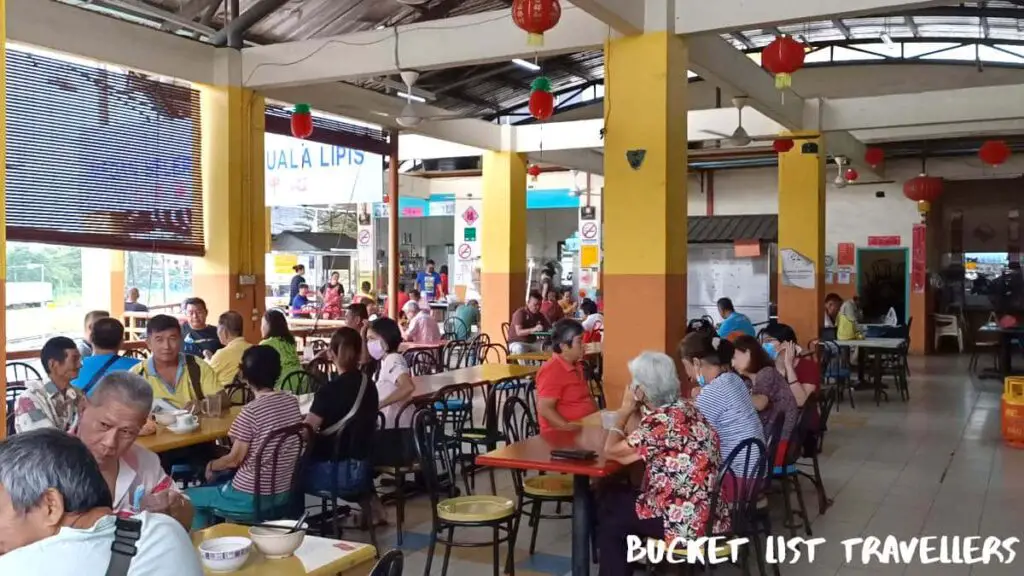
Located just a few hours drive from Kuala Lumpur, Kuala Lipis is a beautiful town that is well worth a visit. The town was historically a gold mining centre and its prosperity grew with the establishment of the railway in 1924. While its glory days are behind it, it remains a fascinating town filled with distinctive colonial era buildings. Surrounded by nature, the town is close to Kenong Rimba Park. It is also just a couple of hours drive from Taman Negara tropical rainforest. Other activities in the area include golfing, visiting the zoo as well as indulging in delicious local food.
Kuala Lipis Destination Guide: Know before you go
Basic info about Kuala Lipis Malaysia
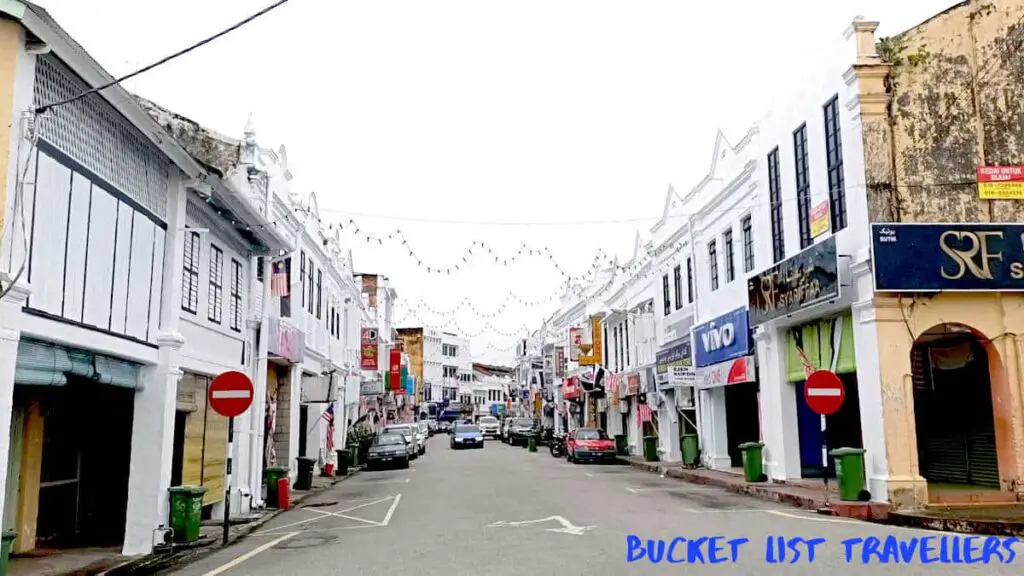
- City name in other scripts – كوالا ليڤيس (Jawi)
- Language – Malay. Pahang Malay is a dialect of Malay spoken in Kuala Lipis. Specifically, there is a sub-dialect of Pahang Malay of Kuala Lipis. There are 10 dialects of Malay used throughout thought the country, with Standard Malay being the unifying language. English is becoming more widely spoken in the country. However not everyone you meet will be able to speak English. Mandarin Chinese, Malaysian Chinese, Tamil, other Indian languages as well as Creole are spoken by the various ethnic groups that live in Malaysia.
- Currency – Malaysian ringgit (MYR). This has been the official currency of Malaysia since 1967. Currency exchanges can be found in most cities and ATMs are available widely throughout the country.
- Population – 20,000 (2010)
- Area – 5,198 km2 (2,456 sq mi) – this is the area for the district of Lipis
- District – Lipis
- State – Pahang
- Emergency number – 999
- Police number – 999
Utilities in Kuala Lipis Malaysia
- Electricity – Malaysia uses Type G power plugs. The country operates on a 240v supply voltage at 50Hz. Power outages are reasonably common in Malaysia.
- Water – the tap water in Malaysia is not generally safe to drink. Tap water is usually treated, but pipes may be old. Therefore most locals boil their water or use a water filter just to be safe.
- Toilets – sit-down flushing toilets as well as Asian style squat toilets are common in Malaysia. Toilets generally come equipped with a spray hose (sometimes referred to as a Muslim shower). The spray hose is like a European bidet and is used for cleaning personal areas as an alternative to toilet paper. All of the accommodation we stayed in throughout the country was equipped with the western style sit-down flushing toilets with spray hoses. Toilet paper is also usually provided. Don’t flush your toilet paper – use the bins provided. The use of bathroom slippers is customary and is provided in accommodation and sometimes also in public bathrooms. Public bathrooms often offer both sit-down and squat style toilets. Public toilets are common in Malaysia. The charge is usually around 30-50 sens.
- Telephone country code: +60
Where is Kuala Lipis Malaysia?
Kuala Lipis is in the Lipis district in the middle of the state of Pahang Malaysia. This town is at the confluence of the Lipis River and the Jelai River. Kuala Lipis is also on Malaysia’s Jungle Railway (also known as KTM Intercity Eastern Sector). Furthermore, the town is close to the road Federal Route 8, which conntects Kota Bharu with Kuala Lumpur. The town is at the northern end of Peninsular Malaysia, three hours drive from the border with Thailand.
The closest towns to Kuala Lipis are Raub and Gua Musang. Kuala Lipis is 1 hour by car from Raub and 1.25 hours by car from Gua Musang.
How to get to Kuala Lipis Malaysia
Kuala Lipis destination guide: Arriving by land
Kuala Lipis Malaysia intercity land transport

The main transport options for travelling overland to Kuala Lipis Malaysia are:
- Private vehicle
- Private transport operator
- Train
- Bus
- Bike
Driving to Kuala Lipis from within Malaysia
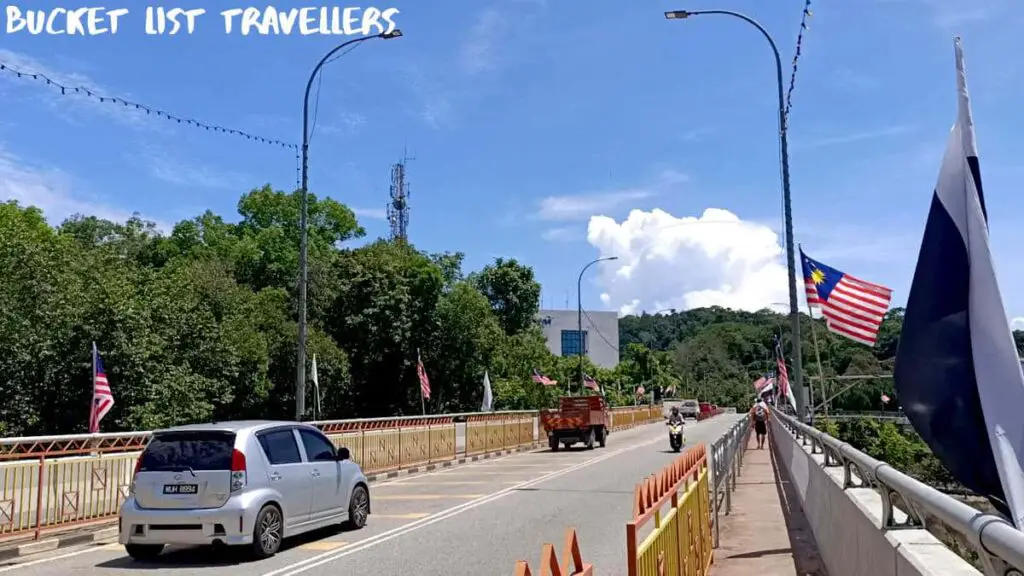
If you are driving to Kuala Lipis from within Malaysia, here are the travel times and distances:
- Raub, Pahang – 1 hour 1 minute (58km, 36miles) without tolls
- Gua Musang, Kelatan – 1 hour 13 minutes (97km, 60miles) without tolls
- Kuala Lumpur – 2 hours 20 minutes (167km, 104miles) with tolls or 3 hours 4 minutes (172km, 107miles) without tolls
- Kuantan, Pahang – 3 hours 2 minutes (239km, 149miles) with tolls or 3 hours 10 minutes (212km, 132miles) without tolls
- Malacca, Malacca – 4 hours 1 minute (309km, 192miles) with tolls or 5 hours 1 minute (314km, 195miles) without tolls
- Kota Bharu, Kelatan – 4 hours 29 minutes (284km, 176miles) without tolls
- Kuala Terengganu, Terengganu – 4 hours 50 minutes (422km, 262miles) with tolls, 5 hours 3 minutes (375km, 233miles) without tolls
- George Town, Penang – 5 hours 5 minutes (371km, 231miles) with tolls or 6 hours 47 minutes (463km, 288miles) without tolls
- Johor Bahru, Johor – 5 hours 47 minutes (490km, 304miles) with tolls or 6 hours 55 minutes (459km, 285miles) without tolls
Intercity trains to Kuala Lipis Malaysia
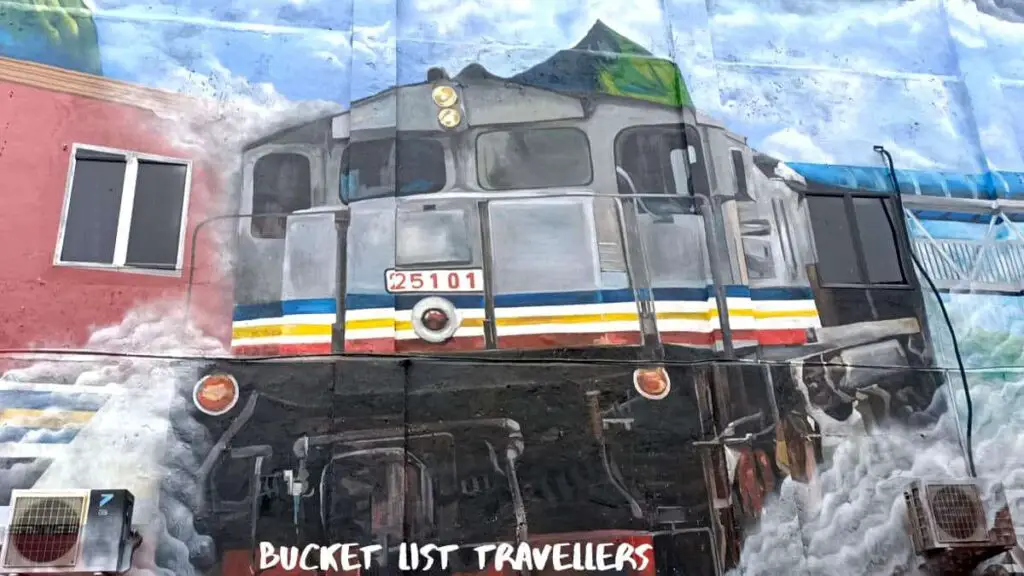
Kuala Lipis is a station on the Malaysian Jungle Railway. This line runs from Tumpat (near Kota Bharu) to Gemas.
Intercity buses to Kuala Lipis Malaysia
A common way to get around Malaysia is by using intercity buses. These are budget friendly and the network is extensive. Intercity bus companies in Malaysia include KKKL Express as well as S&S International.
Popular bus destinations from Kuala Lipis include:
- Kuala Lumpur Malaysia – travel time 3 hours. Tickets start from 15 ringgit one way.
- Gua Musang Malaysia – travel time 2 hours. Tickets start from 9 ringgit one way.
- Raub Malaysia – travel time 1 hour. Tickets start from 5 ringgit one way.
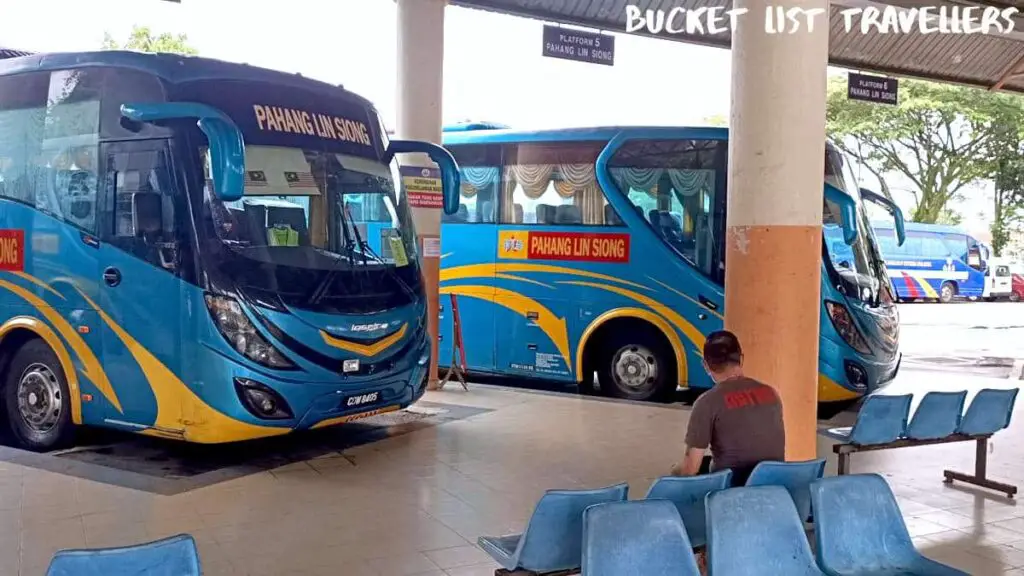
Kuala Lipis destination guide: Arriving by air
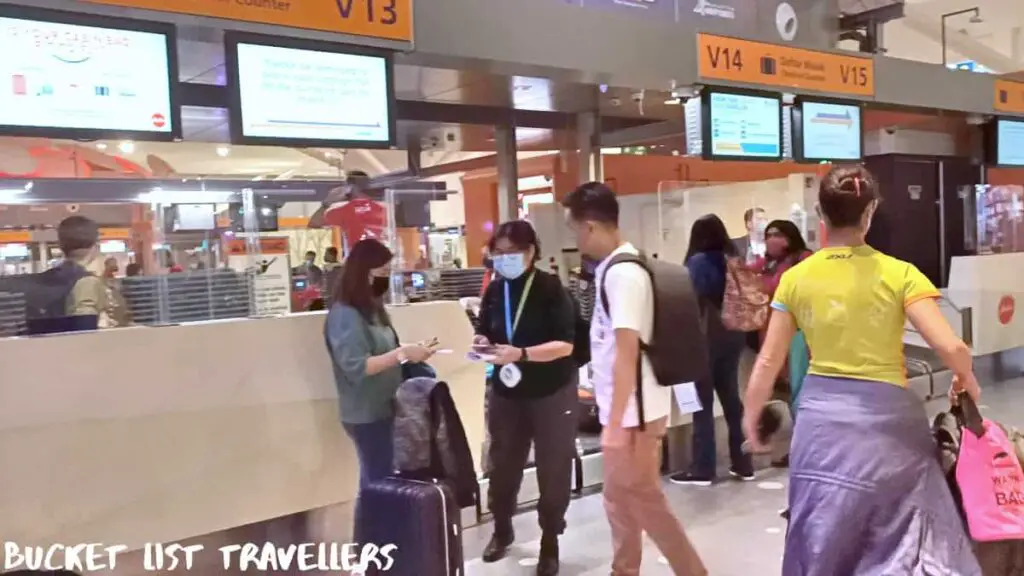
The closest airport to Kuala Lipis is Sultan Azlan Shah Airport (IPH). This airport is 114km (71 miles) away.
Other nearby airports include:
- Sultan Abdul Aziz Shah Airport (Airport code SZB). This airport is 130km (81 miles) away.
- Sultan Haji Ahmad Shah Airport (Airport code KUA). This airport is 137km (85 miles) away.
- Kuala Lumpur International Airport (Airport code KUL). This airport is 165km (102 miles) away.
The national airline of Malaysia is Malaysia Airlines.
Kuala Lipis destination guide: Arriving by boat
There are no regular boats to Kuala Lipis.
Kuala Lipis destination guide: How to get around Kuala Lipis Malaysia
Walking in Kuala Lipis Malaysia
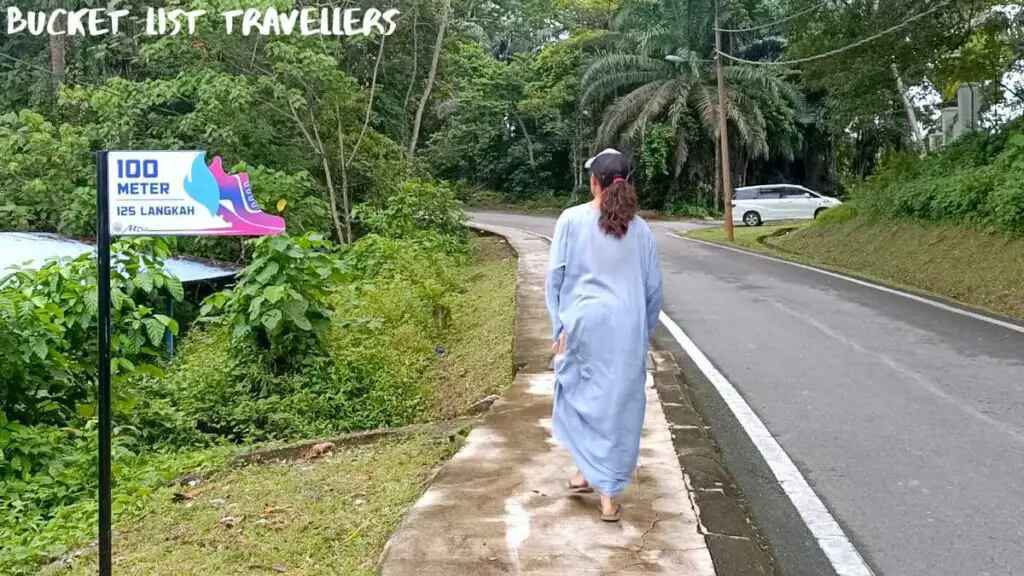
By far the easiest and cheapest way to get around Kuala Lipis is to walk. Most of the main attractions in the town are within easy walking distance.
Local buses in Kuala Lipis Malaysia
There are no local buses in Kuala Lipis.
Trams in Kuala Lipis Malaysia
Kuala Lipis does not have a tram system.
Local trains in Kuala Lipis Malaysia
Kuala Lipis does not have a local train line.
Metro trains (subway or underground) in Kuala Lipis Malaysia
Kuala Lipis does not have an underground train line.
Vehicle hire in Kuala Lipis Malaysia
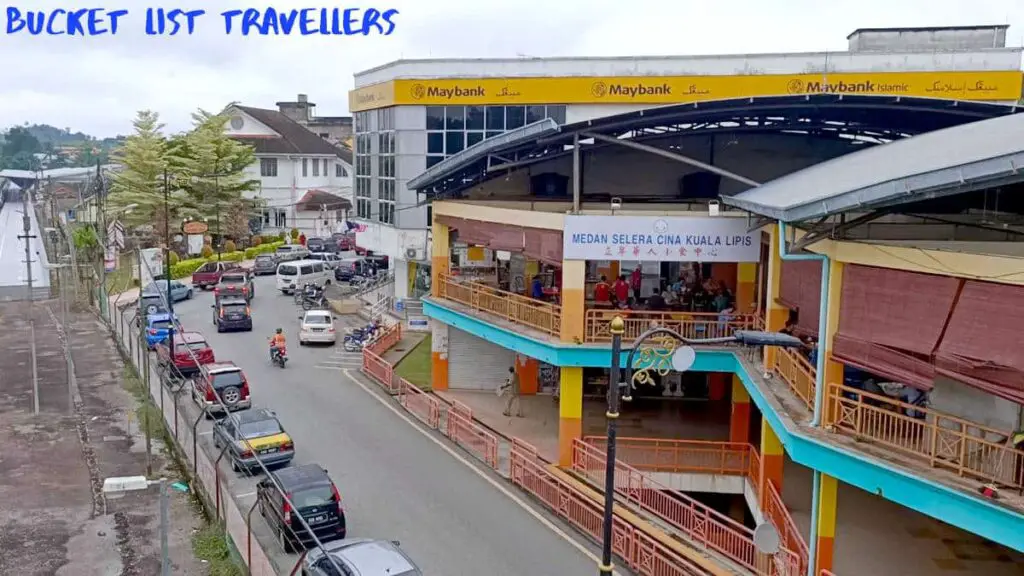
A wide variety of vehicles can be rented in Malaysia. This includes:
- Electric scooters
- Bicycles
- Motorcycles
- Cars
- SUVs
- Boats
In Malaysia they drive on the left side of the road.
Taxis in Kuala Lipis Malaysia
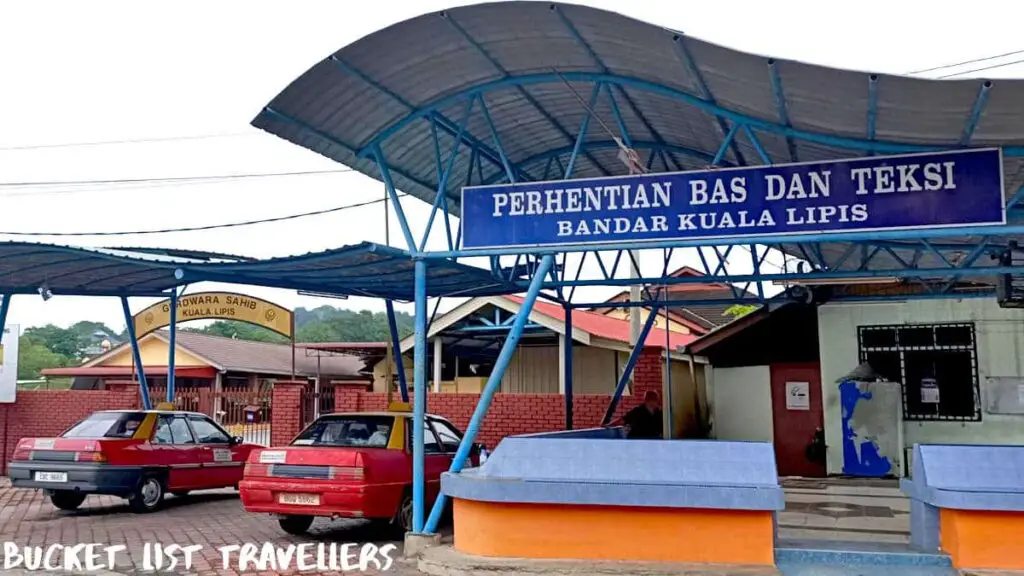
There is a taxi rank near the bus station in Kuala Lipis. This is marked as “Perhentian Bas Dan Teksi Bandar Kuala Lipis” which translates to “Kuala Lipis City Bus and Taxi Stop”.
Taxis are common in Malaysia. Fares are regulated and are usually metered. However taxi drivers in Malaysia do not have the best reputation, which is why alternative services like Grab are very popular.
In general your fare will include the following costs:
- The pickup fee or minimum fee – this is charged as soon as you get into the vehicle.
- Airport surcharge – this is an additional fixed fee for travelling to an airport.
- Price per kilometre – the rate is double between midnight and 6am.
- Price per hour – this is a price that gets charged when the taxi is stuck in heavy traffic.
- Surcharge for more than 2 adult passengers – this is an additional fixed fee.
- Surcharge for using the luggage compartment – this is an additional fixed fee.
- Surcharge for booking by phone – this is an additional fixed fee.
- Road toll charges
Check that the meter gets switched on at the start of your journey at the right rate. We also recommend bringing enough change in cash as drivers generally only accept cash and may not have change.
Alternatively, if booking in advance the fare may be a fixed price that is agreed on before the trip. Some taxis also operate on a pre-paid coupon system where the coupon is purchased from a counter at the airport.
It is not necessary or expected to tip taxi drivers in Malaysia.
Ride-share services in Kuala Lipis Malaysia
Kuala Lipis is a small town, so the major ride-share services do not operate here. However you may be able to pay a local to drive you around.
Grab is the main app based ride-hailing service in Malaysia. Other ride-share services in Malaysia include MyCar, MULA, DACSEE, EzCar, inDriver as well as the women only service Riding Pink. Uber no longers operates in Malaysia after Grab acquired all of its Southeast Asia assets. Lyft services only Kuala Lumpur in Malaysia via its Grab partnership.
Kuala Lipis destination guide: Is Kuala Lipis Malaysia worth visiting?
Kuala Lipis is a charming town along Malaysia’s Jungle Railway. If you’re planning a trip up the East Cost of Peninsular Malaysia it’s a nice stop along the way. However if you only have a short time in Malaysia, we wouldn’t recommend including Kuala Lipis in your Malaysia travel itinerary.
Kuala Lipis destination guide: How long to spend in Kuala Lipis Malaysia
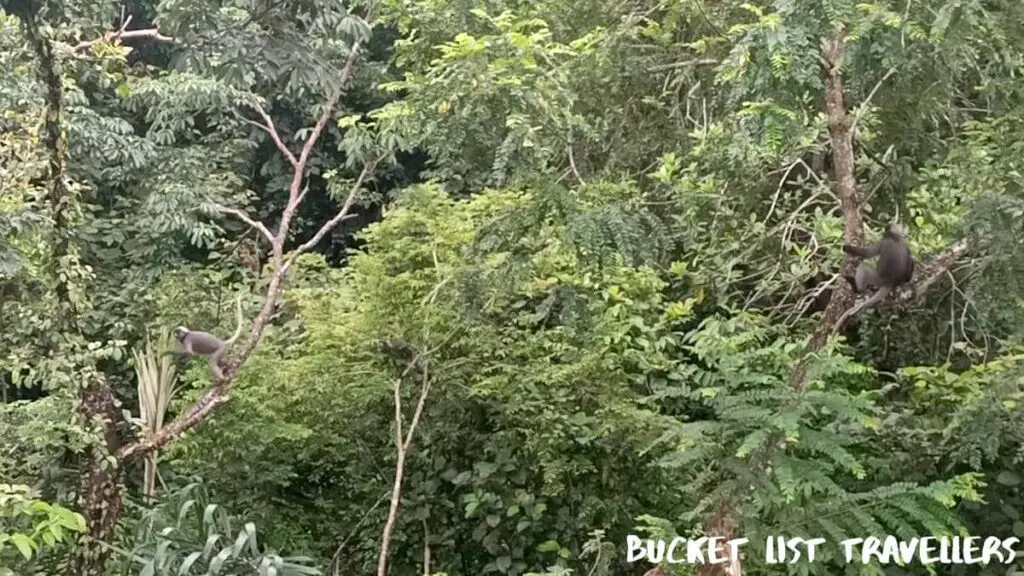
Kuala Lipis is a colonial era town with a rich past. The town is filled with historic buildings and surrounded by nature. Moreover, it has a relaxed atmosphere and friendly locals. The town also boasts golf courses, parks, a zoo as well as a great mix of eaties. This inland town is less than 3 hours drive from Kuala Lumpur. Located on Malaysia’s Jungle Railway, it is perfect for a short stop on your way to the East Coast of Peninsular Malaysia. We spent 1 night in Kuala Lipis and enjoyed learning about its history and sampling the delicious food on offer.
Kuala Lipis destination guide: What to do in Kuala Lipis Malaysia
Kuala Lipis is a scenic Malaysian town with a number of interesting activities on offer. It has a range of great free activities as well as paid activities.
Kuala Lipis destination guide: Free things to do in Kuala Lipis Malaysia
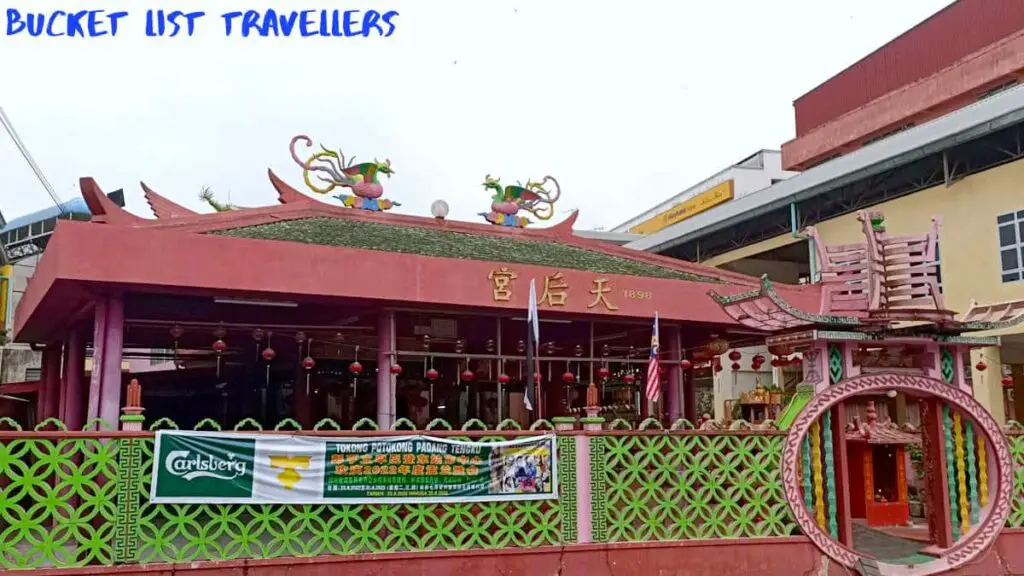
There are enough free activities in Kuala Lipis Malaysia to keep you entertained for a day or two:
- Thean Hou Temple
- Masjid Negeri (State Mosque)
- Masjid Daerah Lipis (Sultan Mahmud)
- Datan Informasi Kuala Lipis
- Jambatan Keretapi Kg Tanjung Jati, Kuala Lipis
- Kuala Lipis Roundabout
- Clifford School
- Pahang Club House
Kuala Lipis destination guide: Paid activities in Kuala Lipis Malaysia
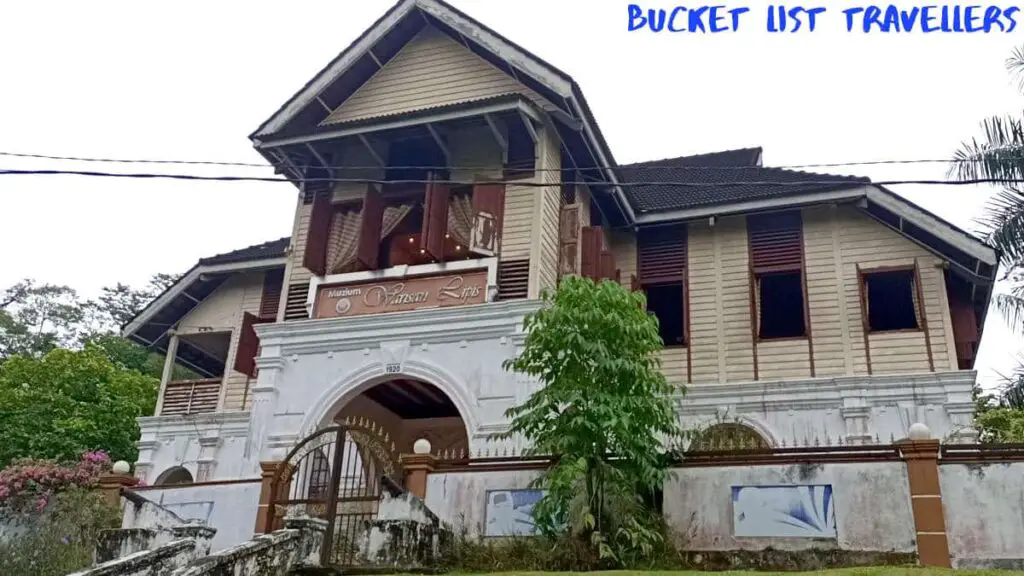
A number of attractions in Kuala Lipis Malaysia charge an entry fee:
- Kenong Rimba Park – entry fee 50 ringgit for adults (as at 2023).
- Gua Jinjang Pelamin
- Muzium Warisan Lipis – entry fee 1 ringgit for adults (as at 2018).
- Driving Range Lipis
- Lipis Zoo – entry fee 2 ringgit for adults (as at 2023).
- Lipis Valley Golf Club
Weather in Kuala Lipis Malaysia
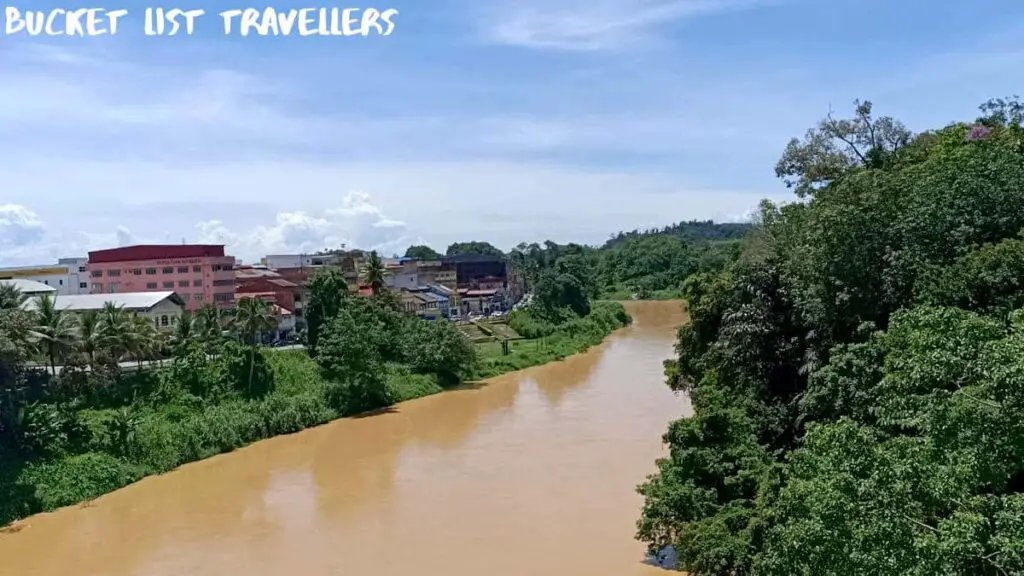
The climate for Kuala Lipis is classified as tropical, with relatively uniform hot temperatures and also high humidity throughout the year. The hottest month is May with an average temperature range of 23°C to 32°C (73°F to 90°F) and coldest month December with an average temperature between 22°C to 30°C (71°F to 86°F). There are two monsoon seasons in Malaysia, November to early March, which is typically the most rainy, and June to September. The period of March through to June between the two monsoons is the hottest and also the most uncomfortable weather of the year.
Internet and mobile phones in Malaysia
Major internet and phone companies in Malaysia – Celcom, Digi, Hotlink (Maxis), U Mobile, UniFi Mobile, Tune Talk, Yes, XOX Mobile / ONEXOX, redONE, Yoodo, Telekom Malaysia and Time dotCom.
5G has been in Malaysia since December 2021. 2G will not be be switched off in Malaysia. 3G is was switched off in March 2022.
Malaysia is ranked 61st fastest in the world for mobile internet speeds and 38th fastest for fixed broadband. For Fixed Broadband the average download speed is 90mbps and upload is 51mbps (as at October 2022).
Cell phone SIM cards can be bought in a numbers of places throughout Malaysia. These include phone stores, in shopping malls, at bus stations as well as at airports. Some form of ID, such as a passport, is required in order to purchase a SIM card in Malaysia.
Where to stay in Kuala Lipis Malaysia
We recommend the following accommodation in Kuala Lipis Malaysia:
- Best hotel in Kuala Lipis Malaysia – Star-Well Hotel is a great choice for travelers looking for a comfortable and safe stay in Kuala Lipis, Malaysia. This hotel is fairly new and has been praised for its cleanliness and comfort by many guests. Additionally, the hotel offers secure parking for guests’ peace of mind.
How much to budget for Kuala Lipis Malaysia?
Kuala Lipis destination guide: Daily spend for a couple travelling in Kuala Lipis Malaysia

As a rough guide, we recommend the following budgets for a couple:
- Low-budget daily spend – 150 ringgit per day for a couple will get you budget accommodation, meals from bakeries and markets, local transport and free or cheap activities such as visiting temples and markets
- Mid-range daily spend – 300 ringgit per day for a couple will get you mid-range accommodation, local transport, restaurant meals and a few paid activities
- Luxury spend – Kuala Lipis is not a luxury destination
Kuala Lipis destination guide: Accommodation in Kuala Lipis Malaysia

There is a good range of accommodation to suit most budgets in Kuala Lipis Malaysia. Airbnb operates in Malaysia, and there are a number of Airbnb properties in Kuala Lipis. Wifi is not always provided for Airbnb properties in Malaysia, so we recommend checking if it is included in the listing. One thing to keep in mind with hotels in Malaysia is that smoking in hotel rooms is often permitted.
How much is accommodation in Kuala Lipis Malaysia?
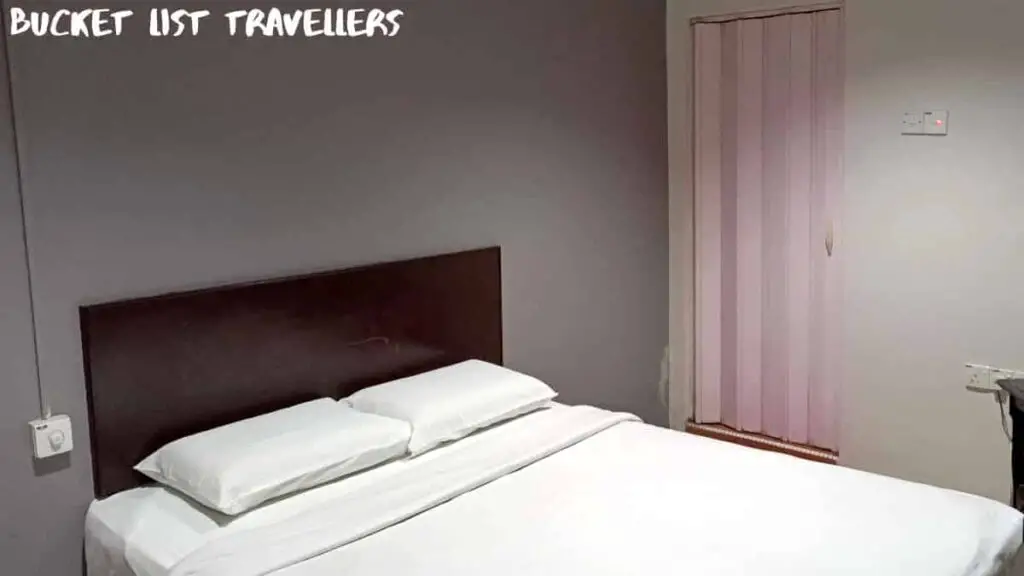
For short-term accommodation, a general price per night is as follows:
- Budget accommodation – there is no dorm accommodation in Kuala Lipis. The cheapest accommodation is 60 ringgit for a private room.
- Mid-range accommodation – 75-130 ringgit for a private room.
- Luxury accommodation – there is no luxury accommodation in Kuala Lipis.
- Rental property – 160-520 ringgit a night for a fully furnished 3-4 bedroom home.
Tourist tax on accommodation in Malaysia
From 1 January 2023 there is a tourist tax of 10 ringgit per accommodation per night in Malaysia. This tax is collected by the property. Permanent residents and Malaysian nationals are exempt from the tax. Furthermore the tourist tax does not apply to homestays and kampung stays registered with the Ministry of Tourism.
Kuala Lipis destination guide: Food in Kuala Lipis Malaysia
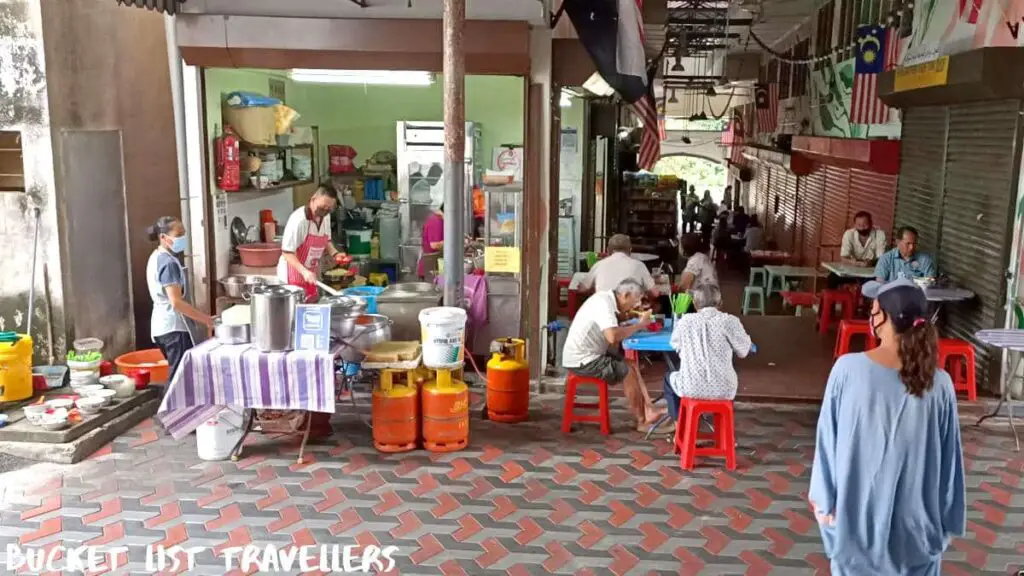
Located on the Lipis River, river fish are popular in Kuala Lipis.
How much does food cost in Kuala Lipis Malaysia?
Our price guide for your food budget in Kuala Lipis Malaysia is as follows (prices as at 2022):
- Restaurant meal – 30-60 ringgit for a main dish
- Night market or hawker market food – 5-15 ringgit for a dish
- Ais kachang – 4-6 ringgit
- Coffee – 1.50-2.50 ringgit
Must eat food in Kuala Lipis Malaysia
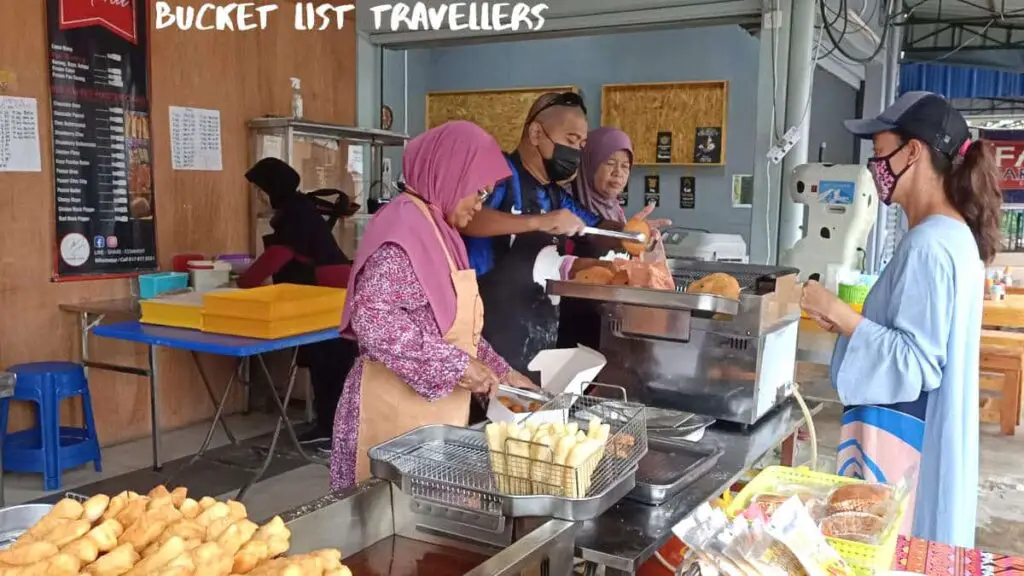
Kuala Lipis famous food includes:
- Cakoi from Master Cakoi Legasi Pak Ambong
- Wild River Tengalan Fish
- Nasi Kebuli
- Gulai asam rong
- Laksa Pahang
- Lemang
- Glutinous rice and meat rendang
Cheap Eats in Kuala Lipis Malaysia
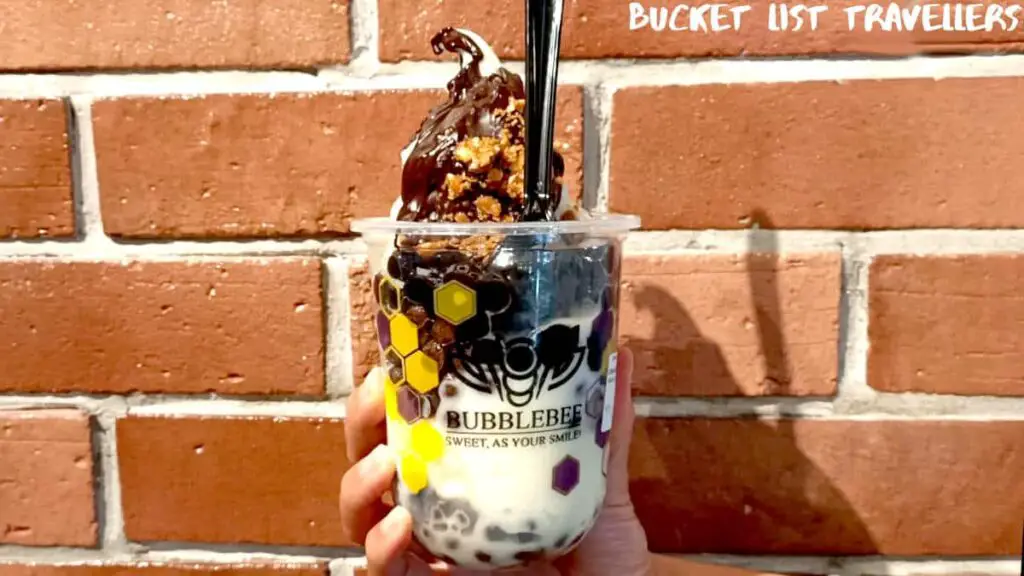
- Bakeries are a great place to get cheap and delicious food.
- Hawker centres in Malaysia are ubiquitous and have excellent budget friendly food. The variety of stalls available means that you have a good range of options to choose from.
- Night markets in Malaysia are another of our go to places for affordable and tasty food. There’s also usually stalls selling items like clothes, toys and shoes in addition to the food stalls.
- Street food is also a very common cheap eat option in Malaysia. You can often find street food around transport hubs as well as scattered in various places around the city.
Kuala Lipis Malaysia culture
Weekends in Pahang Malaysia
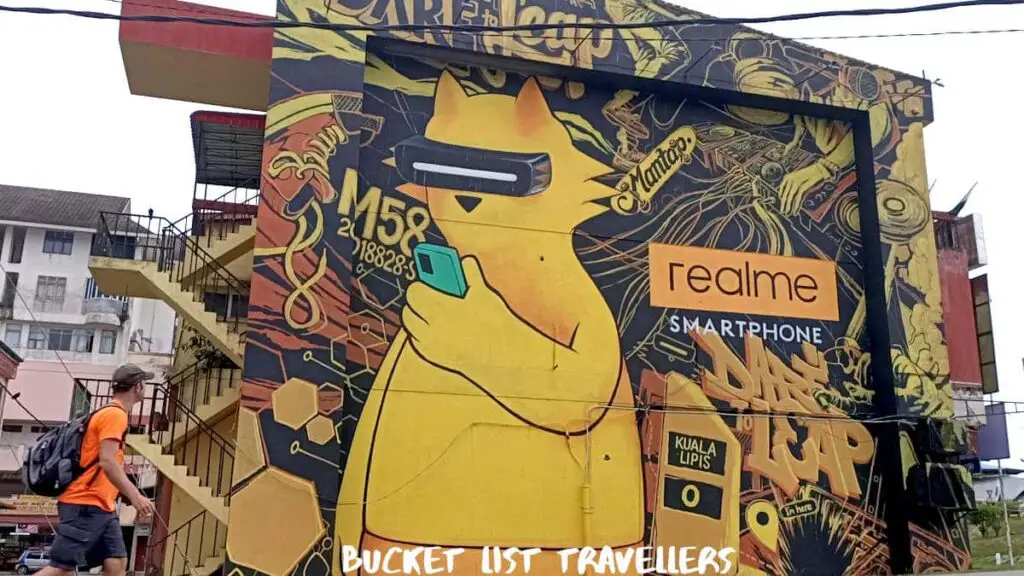
Which days are weekdays and weekend days vary in Malaysia depending on the state you’re in. In the state of Pahang weekdays are Monday to Friday and weekends are Saturday and Sunday. Keep this in mind as weekends can affect prices and availability (particularly for accommodation). Additionally weekends may impact opening hours as well as how crowded attractions are.
Pahang public holidays
Malaysia has one of the highest number of public holidays in the world. In total, there are between 18 and 20 public holidays observed in each state. This includes national holidays as well as state based holidays. Public holidays for the state of Pahang are as follows:
- New Year’s Day – 1st January
- Chinese New Year’s Day – 1st day of 1st lunar month, in January or February
- Chinese New Year Holiday – 2nd day of 1st lunar month, in January or February
- Labour Day – 1 May
- Wesak Day (Buddha’s birthday) – May or June, date varies
- Hari Hol Pahang – 22 May
- Hari Nuzul Al-Quran – 17th day of Ramadan, date varies
- Hari Raya Aidilfitri or Hari Raya Puasa – the last day of Ramadan, date varies
- Hari Raya Aidilfitri Holiday or Hari Raya Puasa Holiday – day after the last day of Ramadan, date varies
- Yang di-Pertuan Agong’s Birthday (King’s Birthday) – 1st Monday in June
- Sultan of Pahang’s Birthday – 30 July
- Hari Raya Qurban (Aidiladha) (Feast of the Sacrifice) – date varies
- Awal Muharram (Islamic New Year) – date varies
- Merdeka Day (National Day, Independence Day) – 31 August
- Malaysia Day – 16 September
- Maulidur Rasul (Prophet Muhammad’s Birthday) – 12th day of the 3rd month of the Islamic calendar
- Deepavali – date varies, October or November
- Christmas Day – 25 December
National symbols of Malaysia
- Malaysia flag – 14 alternating red and white stripes with a blue canton with a yellow crescent and 14 pointed star. The Malaysian flag is called the Stripes of Glory.
- Malaysia coat of arms – two tigers supporting a shield with a yellow crescent and a 14 pointed star on top and a yellow banner with words that translate to “Unity is strength” written in both romanised Malay and Jawi at the bottom.
- National flower – hibiscus
- National bird – rhinoceros hornbill
- Malaysia national animal – the Malayan tiger
Malaysia pastimes
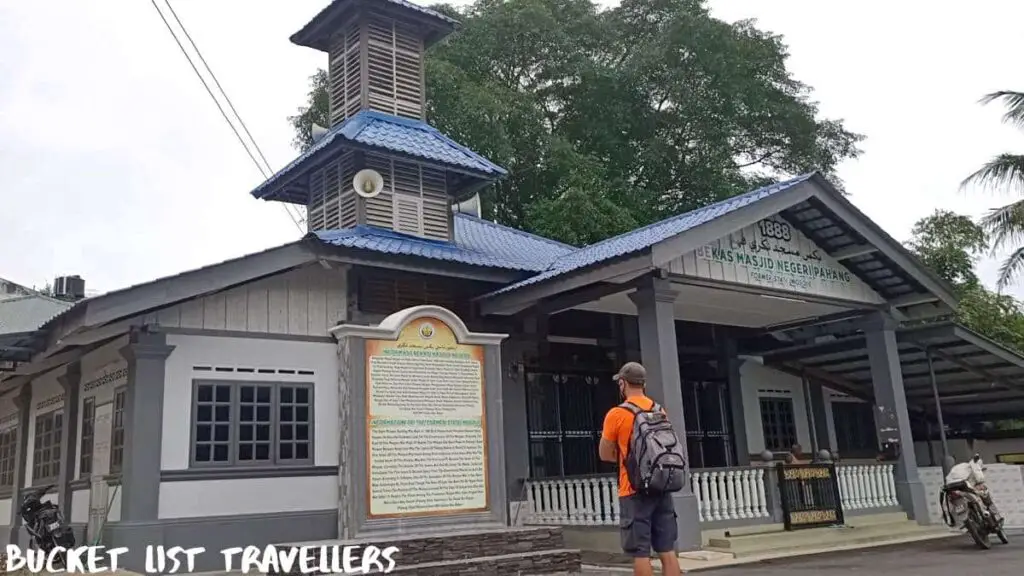
- National dish – nasi lemak
- Popular drinks – teh tarik, Ipoh white coffee, milo ais, sirup bandang
- National sport – sepak takraw
- Religion – 64% Islam, 19% Buddhist, 9% Christian, 6% Hindu (as at 2020)
Famous people from Kuala Lipis Malaysia
- Famous people born in Kuala Lipis Malaysia – former Malaysian Prime Minister Najib Razak, Siti Nurhaliza (born in nearby Awah village and has family living in Kuala Lipis), politician Ghazali Shafie.
- Sports stars from Kuala Lipis Malaysia – footballer Mohd Fadzli Saari
Is Kuala Lipis Malaysia Safe?
Malaysia travel guide: Safety in Malaysia
We have spent around 4 months travelling extensively through Malaysia over two separate trips. In our experience the country is extremely safe. Malaysia ranks 18th safest country on the Global Peace Index (as at 2022). As with any country, there are good areas and bad areas. Watch out for pickpockets and bag snatching particularly at crowded tourist attractions. In particular, when eating out don’t leave your bag, phone or wallet on the table or next to you where someone can quickly grab it and run away. Instead keep your belongings physically attached to you at all times. Make sure no-one is watching whenever you are entering pin codes and never lose sight of your credit card when making a purchase.
General safety considerations in Malaysia
Other general safety considerations for travel in Malaysia:
- Drinking water – tap water in Malaysia is not generally safe to drink. Tap water is usually treated, but pipes may be old. Therefore most locals boil their water or use a water filter.
- Mosquitoes – mosquito borne illnesses are a significant risk in Malaysia, particularly dengue, Zika and chikungunya. Malaysia is in the pre-elimination phase of malaria. While malaria is a greater risk in Malaysian Borneo, there have also been cases on the Malaysian peninsula. Take precautions to avoid mosquito bites.
- Altitude sickness – Malaysia has areas of high altitude and therefore altitude sickness risk. If you visit high altitude areas in Malaysia, allow sufficient time to acclimatise. If you experience signs of altitude sickness, including headache, nausea or vomiting, dizziness, tiredness, loss of appetite or shortness of breath, get help immediately.
- Road safety – Road accidents are a significant risk in Malaysia. While road conditions in Malaysia are generally very good, traffic is often very heavy. Furthermore drivers in Malaysia tend to speed up rather than slowing down for amber lights. We also found that roads in Malaysia are not typically built with pedestrians in mind, and footpaths often stop unexpectedly in busy areas.
- Water safety – take care when swimming as currents and waves may be stronger than you expect.
- Earthquakes – Malaysia experiences both regional and local earthquake activity. In an earthquake, stay away from glass, windows, outside doors and walls and anything that could fall. If inside, get under a table, desk or solid furniture and hang onto it. Cover your head and torso to protect from falling objects. If outside, stay outside and go to an open area away from buildings.
- Sun safety – Exposure to the sun can have adverse short-term and long-term effects on the skin, eyes and immune system. Sun protection such as sunscreen, a hat and sunglasses is very important to ensure you don’t get burnt.
- Dogs – rabies from rabid dog bites is a risk in Malaysia. For more on dog safety while travelling, check out this video.
As with any destination, take all of your normal safety precautions.
Malaysia Blogs
You can find our Malaysia travel blogs below.
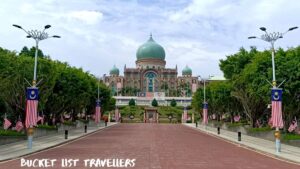
Putrajaya Destination Guide: Everything You Need to Know (2024)

Cyberjaya Destination Guide: Everything You Need to Know (2024)

Kuala Lumpur Destination Guide: Everything You Need to Know (2024)

Raub Destination Guide: Everything You Need to Know (2024)
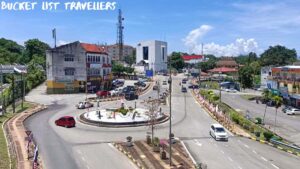
Kuala Lipis Destination Guide: Everything You Need to Know (2024)
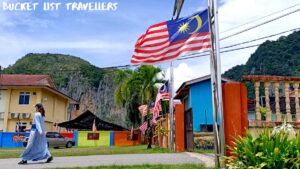
Gua Musang Destination Guide (2024): What You Need to Know

Dabong Destination Guide (2024): What You Need to Know
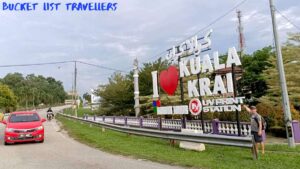
Kuala Krai Destination Guide (2024): What You Need to Know
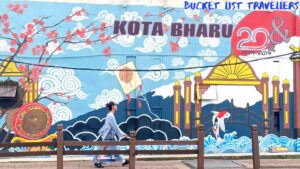
Kota Bharu Destination Guide (2024): What You Need to Know
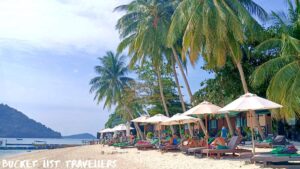
Perhentian Islands Destination Guide (2024): What You Need to Know

Kuala Besut Destination Guide (2024): What You Need to Know
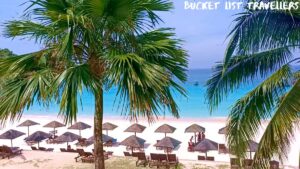
Redang Island Destination Guide (2024): What You Need to Know
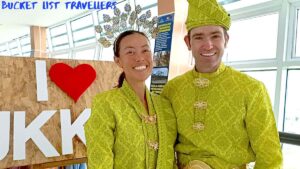
Kuala Terengganu Destination Guide (2024): What You Need to Know
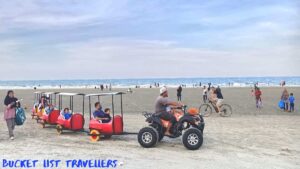
Kuantan Destination Guide (2024): What You Need to Know

Pekan Destination Guide (2024): What You Need to Know
Affiliate Links
This website contains affiliate links, which means we may earn a commission on any purchases at no additional cost to you. Your support helps us continue our travels and make more travel blogs and travel videos, thank you!

